ASK MY PHARMACIST | GOT QUESTIONS? Your pharmacist has answers. Click Here
Structural Chemistry: how to study for PSI, PEBC and other Pharmacy Exam
Structural chemistry is a foundational topic in pharmacy exams like PEBC, PSI, and GPAT—learn about bonding, isomerism, and molecular geometry in this high-yield guide
krupa
6/26/20254 min read


Structural Chemistry: how to study for PSI, PEBC and other Pharmacy Exam
Why structural chemistry matters for exams like PEBC, and PSI
Structural chemistry is not just a part of organic chemistry, it's a core subject that is frequently asked in pharmacy exams like PEBC (Pharmacy Examining Board of Canada), PSI (Pharmaceutical Society of Ireland) and other pharmacy exams. A solid grasp of this topic helps candidates understand drug structure, reactivity, interaction and even pharmacokinetics.
Why an aspiring pharmacy exam candidate can’t ignore the structural chemistry topic?
When it comes to pharmacy exams like PEBC, PSI or others, students often overlook one of the most scoring subjects-structural chemistry.
Yet this subject forms the foundation for:
Drug-receptor interactions
Pharmacokinetics and pharmacodynamics
Drug design and synthesis
Clinical reasoning in medicinal chemistry
Whether you are revising for Canada’s PEBC or Ireland’s PSI, understanding the structure of molecules and how they interact is essential for clinical reasoning and answering MCQs accurately.
What is structural chemistry?
Structural chemistry is a branch of chemistry focused on understanding the spatial arrangements of atoms within the molecules and solids, and how this arrangement influences their properties and behaviors
Some of the core areas which it deals with:
Molecular structure
Bonding types (ionic, covalent, coordinate)
Molecular geometry and shape
Hybridization
Resonance
Stereochemistry (Chirality, optical isomerism)
Functional group recognition
What are core topics to Master in structural Chemistry?
Let’s break it down into subtopics that regularly appear in pharmacy exams:
1. Bonding and Hybridization:
Why it matters: Hybridization determines the shape, bond angles, and stability of molecules, all critical for understanding drug interaction and reactivity.
sp-Linear (180 degree) eg: acetylene
Sp2-trigonal planar (120 degree) eg: ethene
Sp3-tetrahedral (109.5 degree) eg: methane
Exam hack: You can often determine hybridization by counting bonding groups around the atom (steric number). PEBC loves such MCQ

2. Molecular Geometry and VSEPR Theory
It investigates the three dimensional arrangement of atoms and molecules according to their bonds. Some of these are:
Linear, trigonal planar, Tetrahedral, Trigonal Bipyramidal, Octahedral
Effects how drugs fit into receptors (Lock-and -key model)
Example: the stereochemistry of beta-lactam antibiotics affects how they bind to penicillin-binding proteins
3. Resonance structures and Delocalization
Resonance increases a molecule's stability and explains electron distribution.
Resonance often influences the acid-base strength, reactivity, and charge distribution in drugs
Exam tip: Expect questions like “Most stable, least stable” resonance contributor
4. Isomerism: Structural and stereoisomerism
Pharmacy exams often test your ability to differentiate isomers:
Constitutional isomers: different atom connectivity
Stereoisomers: same connectivity, different spatial arrangement
Enantiomers: mirror images (superimposable)
Diastereomers: Not mirror images
Clinical connection: one enantiomer of thalidomide was therapeutics, the other caused birth defects. This highlights how critical stereochemistry is for drug safety.
5. Intermolecular forces:
Understand the Intermolecular force effect such as boiling point, solubility, and absorption.
Some of them are:
Hydrogen bonds
Dipole-Dipole interactions
London dispersion forces, etc
Exam tip: Questions on drug solubility and bioavailability often requires knowledge of these forces
6. Functional groups and Nomenclature
Candidates should be able to name, draw, and recognize the functional group
Learn common pharmacophores: alcohols, aldehydes, amines, carboxylic acids, ketones, esters, etc
Exam tip; flashcards are great for mastering IUPAC naming and functional group recognition-especially under time pressure
What to expect from Structural chemistry in PEBC, PSI and other pharmacy exams
Here is few example of topics usually shows up
Study Tips For Structural Chemistry Mastery
Use visual aids: Draw molecule, build models, or use 3D software like ChemDraw or MolView
Practice Mechanisms: Electron pushing is a universal language in organic reaction
Use Mnemonics:
Watch YouTube animations: for visualizing VSEPR shapes and isomer rotations
Solve past papers: PEBC and PSI questions are often in repeated patterns
Pro tip: Relate Structures to Drugs
PEBC Exam preparation pharmacist in Canada #pebcexam
Link structural chemistry to actual medicines
Understand how morphines 3D structure affects receptor binding
Learn how NSAID functional group impact acidity and solubility
Explore how antibiotic stereochemistry affects spectrum activity
Final Takeaway: Structural chemistry how to score
You don't need to memorise every molecule ever made. But a strong grasp of core structural chemistry principles can make complex questions simple. And since this subject is highly testable and frequently asked in MCQs and Case-study based formats, it is a must study area for anyone taking:
PEBC (Canada)
PSI (Ireland)
FPGEE (USA)
GPAT (India)
Other international pharmacy exams
We understand Structural chemistry can feel overwhelming for few, but at Elite Expertise, our expert educators, Mr. Arief Mohammad and Mrs. Harika Bheemavarapu, breaks down the complex topics like hybridization, isomerism, and molecular chemistry into simple, exam-focused lessons tailored for pharmacy licensure exams like PEBC, PSI, GPAT and many more pharmacy exams.
This blog is intended for educational purposes only and is based on our understanding of structural chemistry topics commonly tested in pharmacy licensure exams such as the Pharmacy Examining Board of Canada (PEBC), the Pharmaceutical Society of Ireland (PSI), and other international assessments. While we aim to provide accurate and up-to-date information, exam formats, syllabi, and regulatory requirements may change. We encourage all readers to consult official sources—such as PEBC, PSI, or relevant national pharmacy authorities—for the most current and authoritative guidance. Elite Expertise does not take responsibility for any actions taken solely based on this content.
⚠️ Disclaimer


Krupa Karamchand is a B. Pharm graduate and KAPS-qualified pharmacist with over 7 years of experience in the pharmaceutical field. As an experienced SEO content writer, she combines her in-depth healthcare knowledge with proven digital strategies to create informative, engaging, and search engine–optimized blogs. Krupa is passionate about making complex medical topics easy to understand and accessible to all readers.
Follow On
About the author
Krupa Karamchand
Content Writer | Elite Expertise
Follow Us
+91 76750 84909
Privacy Policy | © 2025 Elite Expertise . All Rights Reserved.
ELITE EXPERTISE PTY. LTD (ABN: 15668292439) (ACN: 668292439)
Australian Statutory Education License: OPP 2025 ELITE EXPERTISE PTY. LTD
Disclaimer
Elite Expertise is an online education platform dedicated solely to providing coaching and preparation services for the OPRA, PEBC, PSI and PTE exams. We do not offer any sponsorship or migration services. All information provided on our platform is for educational purposes only and should not be interpreted as legal or immigration advice. For inquiries regarding sponsorship, visa applications, or migration services, please consult with licensed immigration professionals or relevant authorities.
Elite Expertise is a trusted and results-driven training platform specializing in preparation for international pharmacist licensing exams. Our comprehensive courses, expert instructors, and proven methodologies have helped countless pharmacy professionals achieve their goals and succeed in competitive regulatory exams. We are proud of our strong success rate and commitment to excellence.
Elite Expertise is an independent training provider. We are not affiliated with any global pharmacy regulatory authorities or official exam-conducting bodies.
Copyright © 2025 Elite Expertise. All rights reserved.
Address
Unit 1/73 Beverley St, Doncaster East VIC 3109, Australia
